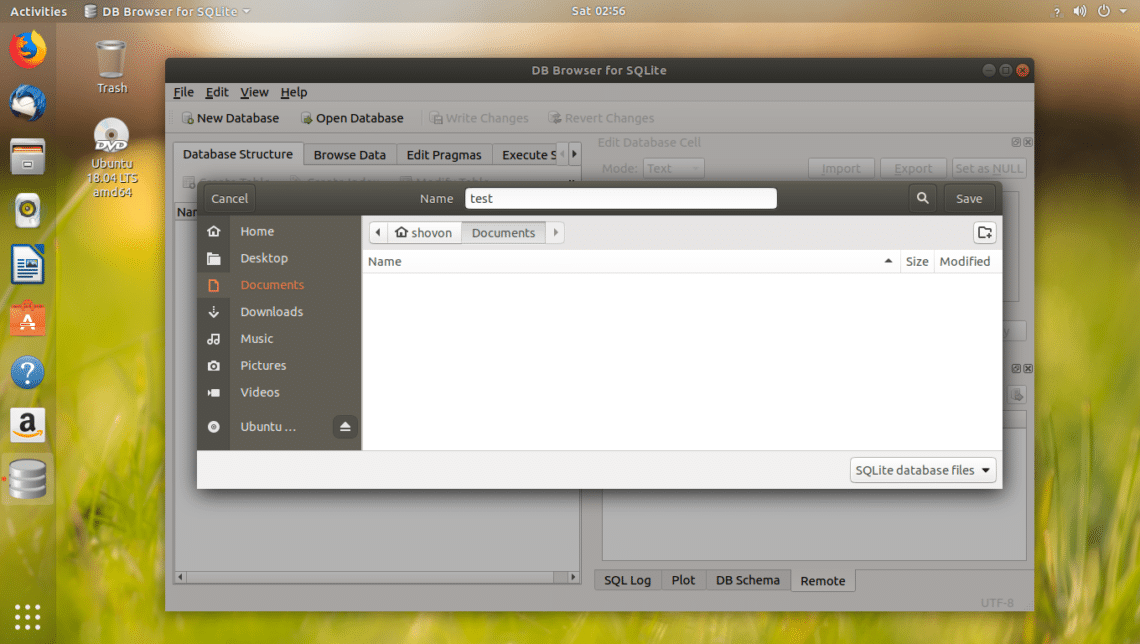
You will now have access to the SQLite, command line interface. In this example, we will be creating a new SQLite database that will be stored in a file called “ pimylifeupSQLite.db“.Ģ. If the file does not exist, the SQLite command-line interface will generate the file for you. As SQLite stores all of its data within a single file on your disk, we will need to reference that file when launching the command line interface. We will walk you through some of the basics of SQL in our next section.ġ. You will need to understand the SQL language, but that is about it.
Setup sqlite browser ubuntu how to#
Now that we have installed SQLite to the Raspberry Pi let us quickly show you how to utilize it.ĭon’t worry, as SQLite is incredibly simple to use and requires little to no configuration. The exact version the Raspbian repository provides is, at the time of publishing, “ 3.27.2“. You will notice that we are using SQLite 3 which is the latest major version at the time of publishing.
Setup sqlite browser ubuntu install#
Once the update process finishes, you can install SQLite to your Raspberry Pi.Īll you need to do to install SQLite is to run the following command. These commands will update the list of packages on your device and then upgrade any out-of-date packages.Ģ. You can update your Raspberry Pi’s operating system by running the following two commands> sudo apt update To make sure we don’t run into any issues when installing SQLite, we should first update the operating system. The reason for this is that SQLite is easily obtainable from the default Raspberry Pi package repository.ġ. The process of installing SQLite on the Raspberry Pi is straightforward and quick. This tutorial was tested using a Raspberry Pi 4, running the latest release of Raspberry Pi OS Buster. Equipmentīelow is a list of the equipment we used when setting up SQLite on the Raspberry Pi. This guide will walk you through the process of installing SQLite to your Raspberry Pi as well as some simple steps on how to utilize it.

SQLite won’t chew up your Raspberry Pi’s RAM and CPU when not being utilized. No external dependencies are required to make it function. There are various reasons why SQLite is a good option for the Raspberry Pi, some of them being the following. Instead of relying on an external system, SQLite writes its SQL data to a file that sits alongside your program. It does not rely on a server to function. This database system differs from MySQL and MariaDB in that it is embedded directly into a program. SQLite is a self-contained relational database management system that does not rely on the typical client-server based system.


 0 kommentar(er)
0 kommentar(er)
